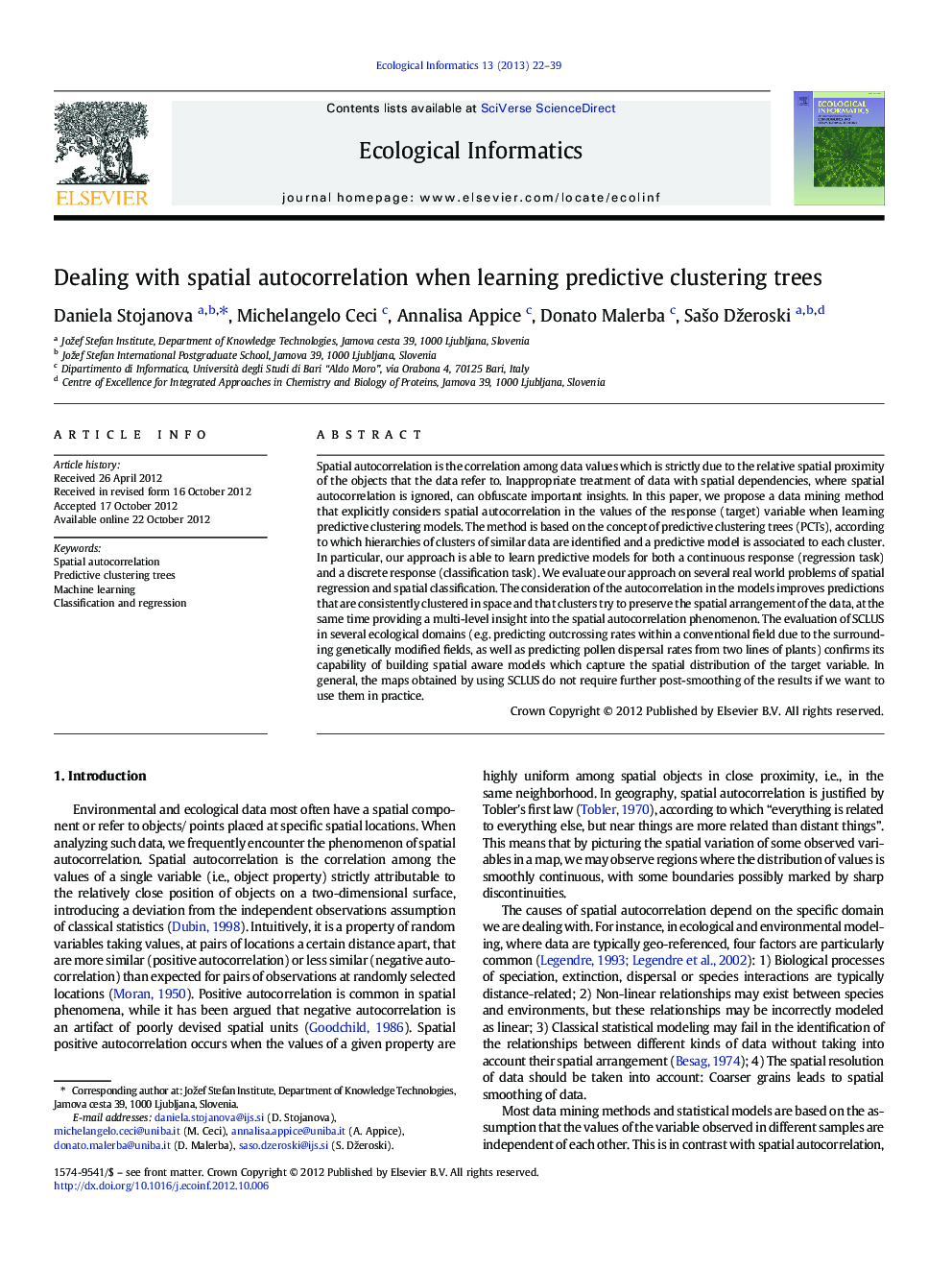| کد مقاله | کد نشریه | سال انتشار | مقاله انگلیسی | نسخه تمام متن |
|---|---|---|---|---|
| 4375008 | 1617219 | 2013 | 18 صفحه PDF | دانلود رایگان |

Spatial autocorrelation is the correlation among data values which is strictly due to the relative spatial proximity of the objects that the data refer to. Inappropriate treatment of data with spatial dependencies, where spatial autocorrelation is ignored, can obfuscate important insights. In this paper, we propose a data mining method that explicitly considers spatial autocorrelation in the values of the response (target) variable when learning predictive clustering models. The method is based on the concept of predictive clustering trees (PCTs), according to which hierarchies of clusters of similar data are identified and a predictive model is associated to each cluster. In particular, our approach is able to learn predictive models for both a continuous response (regression task) and a discrete response (classification task). We evaluate our approach on several real world problems of spatial regression and spatial classification. The consideration of the autocorrelation in the models improves predictions that are consistently clustered in space and that clusters try to preserve the spatial arrangement of the data, at the same time providing a multi-level insight into the spatial autocorrelation phenomenon. The evaluation of SCLUS in several ecological domains (e.g. predicting outcrossing rates within a conventional field due to the surrounding genetically modified fields, as well as predicting pollen dispersal rates from two lines of plants) confirms its capability of building spatial aware models which capture the spatial distribution of the target variable. In general, the maps obtained by using SCLUS do not require further post-smoothing of the results if we want to use them in practice.
► SCLUS (Spatially-Aware Predictive Clustering Trees) explicitly considers non-stationary spatial autocorrelation
► It builds hierarchies of clusters of similar data and associates a predictive model to them
► Our approach learns models for regression and classification
► The effects of autocorrelation are identified and taken into account, separately at each node of the tree
► An extensive experimental evaluation is provided
Journal: Ecological Informatics - Volume 13, January 2013, Pages 22–39